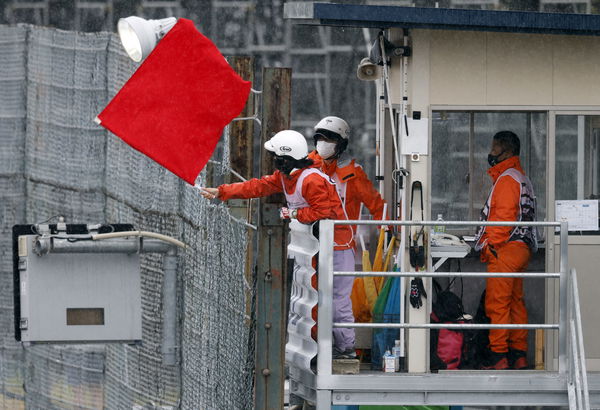
via Reuters
Formula One F1 – Japanese Grand Prix – Suzuka Circuit, Suzuka, Japan – October 9, 2022 Marshalls wave a red flag during the race REUTERS/Issei Kato

via Reuters
Formula One F1 – Japanese Grand Prix – Suzuka Circuit, Suzuka, Japan – October 9, 2022 Marshalls wave a red flag during the race REUTERS/Issei Kato
In Formula One, effective communication is crucial, and one method employed is the use of various flags with distinct meanings. These flags, strategically placed around the track, or lately, colored light panels, convey important messages to drivers through signals deployed by track marshals. Amidst the complex tasks of managing acceleration, braking, steering, and handling radio messages, drivers must also remain attentive to the significance of different flags.
These flags serve as a vital means of communication, informing drivers about various aspects of the race and ensuring a safer and more organized competition. Let’s have a look at what all these flags signify.
ADVERTISEMENT
Article continues below this ad
What does each flag communicate?
Chequered Flag:
This flag signifies the official end of a session and is waved until all cars have crossed the finish line.
Green Flag:
Indicating a clear track with no issues, the green flag is used during practice sessions, qualifying, and the race.
Yellow Flag:
Signifying a hazard ahead, the bright yellow flag comes in two forms: single-waved and double-waved. Drivers must exercise caution, slow down, and refrain from overtaking, with the double-waved version indicating a more significant slowdown, often when marshals are on the track. In practice or qualifying, competitive lap attempts are prohibited during double-waved yellow periods.
Red Flag:
Used to halt a practice, qualifying, or race session due to a serious accident or extreme weather conditions, the red flag is waved at the start line and marshal posts. Drivers must reduce speed and return to the pit lane or their garages.
Blue Flag:
Indicating a faster car approaching, the blue flag informs the driver to yield to the faster vehicle. In races, it signals that the driver is being lapped and must allow the faster car to pass.
Black Flag:
Issued to disqualify a driver, the black flag requires an immediate return to the pit garage, and its deployment is based on steward decisions.
Black and White Flag:
A warning for unsportsmanlike behavior, this flag is typically displayed alongside the driver’s race number.
Read more: From Mission Winnow to Rich Energy: The Shady World of F1 Sponsorships
Black and Orange Flag:
Featuring a black flag with an orange circle, this flag instructs a driver to return to the pits due to a potentially dangerous car issue or damage. The car may rejoin the race after resolution, approved by the chief scrutineer.
White Flag:
Signifying a slower vehicle ahead, the white flag warns drivers of a potential hazard.
ADVERTISEMENT
Article continues below this ad
Yellow and Red Striped Flag:
Indicating a slippery surface due to oil, water, or other substances, this flag alerts drivers to lower grip levels, prompting them to slow down and exercise caution in that section of the track.
Watch this story: Best f1 Livery Designs of All-Time
ADVERTISEMENT
Article continues below this ad
These were all the flags in Formula 1 with the exact meaning each signifies to the driver. This will be a clear indicator of what needs to be communicated in an intense situation like that of the race as it is an effective signal!
What are your thoughts on the Flags? Let us know in the comments below.
ADVERTISEMENT
ADVERTISEMENT
ADVERTISEMENT
ADVERTISEMENT

